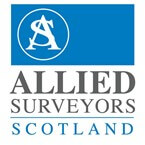Home Report Helensburgh
Home Reports Helensburgh
Our Helensburgh office can help with all aspects of Home Reports.
In accordance with Scottish law, selling a home requires a Home Report, which encompasses a Single Survey, Energy Report, and Property Questionnaire exclusively crafted by Chartered Surveyors.
It is essential to choose a surveyor who is familiar with the local market. Allied Surveyors Scotland, with over 30 nationwide offices, specialises in residential properties in their areas. Our widespread presence offers valuable insights for a Home Report that genuinely matters, playing a vital role in a successful home sale. Our Helensburgh office can help you understand home reports.
What is a home report?
A Home Report is a comprehensive document that provides essential information about a property being sold in Scotland. It is a legal requirement for most residential properties placed on the market in Scotland. The purpose of the Home Report is to provide potential buyers with relevant information about the condition, value, and energy efficiency of the property before they make an offer. Get a home report quotation in Helensburgh now.
Why do you need a home report?
If you are selling a residential property in Scotland, you are required by law to provide a Home Report to potential buyers, except in some limited circumstances. These are: 1) New build homes (including conversions) being sold to the first occupier; 2) If the house is being sold off market, perhaps to a friend, family member or a sitting tenant and is not “marketed”; 3) Holiday lets (usually where planning restrictions prevent anyone living in the property on a year-round basis) ; 4) Unsafe or uninhabitable properties; 5) Where multiple properties are offered for sale as a single portfolio, as this is usually treated as a commercial transaction. The Home Report serves several purposes:
Transparency: It provides transparency and ensures that buyers have access to crucial information about the property’s condition and value before making an offer.
Streamlined Process: Having all necessary information in one document streamlines the buying process, making it easier for both buyers and sellers to negotiate and complete the transaction.
Consumer Protection: It protects buyers from unexpected issues or expenses by providing a clear picture of the property’s condition and potential maintenance requirements. Whatever your enquiry our Helensburgh office can help.
Key Contacts

BSc MRICS
Director | RICS Registered Valuer

MA MRICS
Director | RICS Registered Valuer
